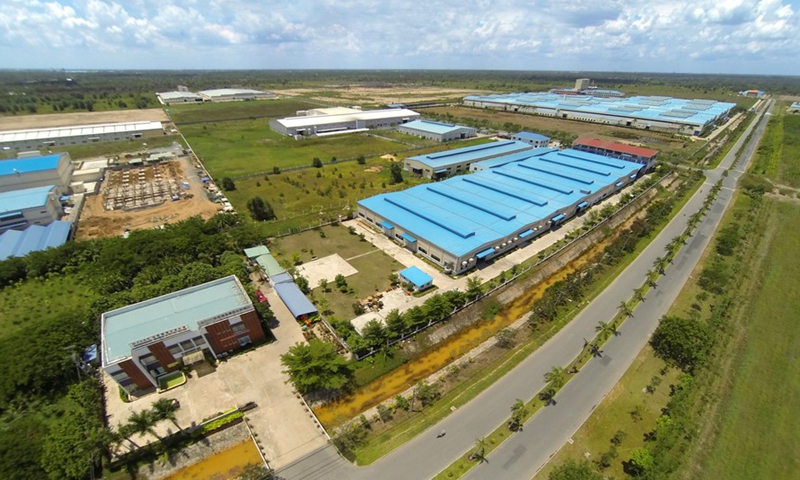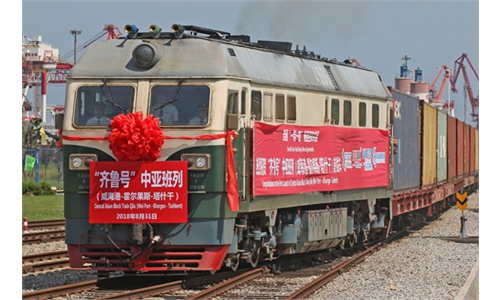Can China accommodate production shift from Southeast Asia?
Trend double-edged sword for Chinese factories

Photo taken on May 21, 2015 shows a view of the Long Jiang Industrial Park in Tien Giang, southern Vietnam. (Xinhua)
The fierce new COVID-19 wave across Southeast Asia - home to about one-fourth of the world's population - has prompted some manufacturing orders originally sent to the region to shift to China in recent months, in what could be the start of a long-term trend of production relocation as a result of the pandemic, according to factories and industry analysts.
However, while the backflow underscored China's stable and complete supply chain that is relatively immune to external uncertainties, thousands of Chinese exporters are now facing a new critical issue: do they have the capacity to fill the supply chain gaps left by Southeast Asian manufacturers?
Some remain prudent, pointing to the intertwined China-centric supply chain in Asia, with China filling the upstream role and Southeast Asia acting as a manufacturing base, which means the new COVID-19 outbreaks in Southeast Asia could weigh on the capacity of China's export machines.
Additionally, the yuan's recent appreciation is crimping Chinese factories' profitability as well, weakening their willingness to handle export orders, industry insiders noted.
Zhang Manfeng, assistant director with the Guangdong Shoe Manufacturers Chamber of Commerce, told the Global Times on Tuesday that some orders have come back to China from neighboring countries such as India and Vietnam, where the epidemic has disrupted local production.
Shoe exports from South China's Guangdong Province - valued at $1.3 billion a year - account for about one-third of China's shoe exports.
"This is an emerging trend since last year, but it further accelerated after the new outbreaks in India in April," Zhang said, adding that new shoe orders have increased 10-20 percent year-on-year since April.
According to industry observers, some plants in Southeast Asia in sectors such as textiles and electronic processing may have to halve their labor forces due to the pandemic, dealing a major blow to their production. If more Southeast Asian countries impose nationwide lockdowns, there will be a bigger hit and a larger shift in manufacturing.
But Zhang noted that the return of orders is still "limited" because global consumption remains lukewarm due to the pandemic, and new orders aren't increasing much.
He said that more orders will come back, as Southeast Asia's industry chains are vulnerable, while China's is relatively complete and stable after containing the epidemic.
In addition to shoes, China's leather industry is also seeing an industrial shift from Southeast Asia.
Chen Zhanguang, secretary-general of China Leather Industry Association, told the Global Times on Tuesday that there has been a short-term backflow of orders to China, which particularly reflected in the surge in online transactions caused by the epidemic.
Chen added that Chinese leather manufacturing enterprises have the ability to respond quickly to different international customer needs, such as short-term delivery or customized production. They also have the comprehensive advantages like complete industrial chain and infrastructure, strong logistics and transportation capacity, and skilled workers to handle international orders.
Zhai Suoling, manager of a large furniture company based in Dongguan, Guangdong told the Global Times on Tuesday that there's been some talk of an industry chain relocation from Southeast Asia, but he hasn't seen any sign of it yet. "It's not a short-term phenomenon. It may take some time," Zhai said.
Some research institutes predict that some middle- and high-end manufacturers may move back to the Chinese mainland after the worsening coronavirus crisis in India, Vietnam and China's Taiwan island. They attribute the relocation to the Chinese mainland's stable supply, the capacity to integrate the value chain, and the government's ability to prevent and contain the virus in a swift manner.
In the coming months, some Chinese suppliers will be flooded with orders from the US and Europe that would otherwise have gone to Southeast Asia. But that's a double-edged sword as Chinese plants are only able to meet part of the overseas demand, analysts said.
"Some Chinese export-oriented companies moved out over the past year, amid a tit-for-tat tariff war between China and the US, although they still source the bulk of their raw materials from China. But as long as the US' tariffs on Chinese products remain in place, it is not a good deal for us to accommodate US orders," Zhai suggested.
Southeast Asia has become part of the China-centric supply chain. Chinese businesses supply materials and other upstream elements, and Southeast Asia acts as a base for manufacturing. The challenge confronting local supply chains means that the broader China-centric network is only functioning partly, Tian Yun, former vice director of the Beijing Economic Operation Association, told the Global Times on Monday.
Zhang said that China's exports of raw materials for shoe production have slowed as factories in places like India and Vietnam shut down.
"Furniture factories in Guangdong are slashing capacity as they only supply the local market. If overseas orders flow back, we don't have enough workers or production capacity, not to mention there's a shortage of electricity," Zhai noted.
Xu Liping, director of the Center for Southeast Asian Studies at the Chinese Academy of Social Sciences in Beijing, told the Global Times on Monday that Chinese exporters in labor-intensive industries should stay cautious about the effects of industry relocation.
"Their profits are small, and an appreciating yuan could further erode their export profits," Xu said.
After a rapid rise in the yuan's exchange rate that sparked widespread concerns, China's central bank announced on Monday plans to raise the reserve requirements on foreign currency deposits for financial institutions by 2 percentage points starting from June 15, a move to cool the yuan's rally.


